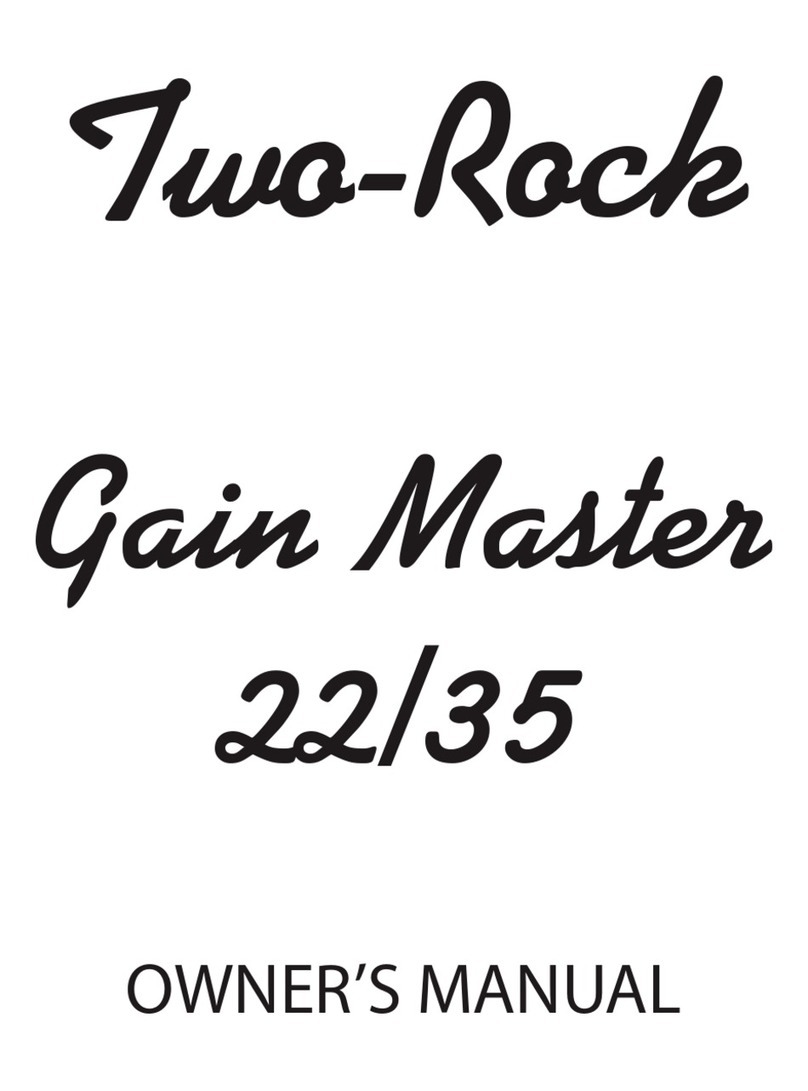Rear Panel Functions
1. A/C Input- Connects the amplifier to A/C power via the power cord supplied. Unless otherwise
specified, your amplifier is designed to operate on 120 volts A/C, 60 cycles.
2. Fuse- See Fuse Chart
3. Power Switch- Turns power on.
4. Fixed Bias/Cathode Bias Switch –The fixed bias mode allows the output/tube section bias to
be controlled by an adjustable bias pot located under the chassis. This adjustment can be used to
set the tubes bias in a range of settings. This mode will allow the end user to maximize the amount
of clean headroom available with the tubes that are installed. Or to push the tubes to a “hot” point
allowing more output section breakup. Note: Caution must be observed when setting the bias and
use of the suggested values stated in our bias section.
The Cathode bias mode allows the output/tube section to be biased by an internal hard wired
circuit. This circuit allows the end user to be able to install a set of tubes and not need to adjust
any values to set the bias on the tube section. This mode sets the tubes internal bias to a point
where it more closely resembles Class A function. This will decrease the amount of clean
headroom but will add more complex tonal harmonics to the signal path.
.
5. Speaker Output Jacks- There are two sets of speaker output jacks. Nominal impedance is 4-8
ohms. The output section has the ability to run a set of speaker loads in parallel. Duel 4 ohm jacks
can be used to take two 8ohm speaker loads and combine them to a 4 ohm load. Duel 8 ohm
jacks can be used to take two 16ohm speaker loads and combine them to a 8 ohm load. NEVER
OPERATE YOUR AMPLIFIER WITHOUT A PROPER SPEAKER LOAD CONNECTED. Be sure
to match the impedance of your cabinet with the impedance (output) of the amplifier.
6.Effects Loop - The effects loop is a passive insertion point. Any effects inserted into loop will be
run in series after the preamp and before the power section. Any effect should have buffers on the
input and output section to correctly match the signal leaving and coming back. The Master
volume controls how much signal is sent to the send.
Effects Send- Use this jack to send the amplifiers signal to outboard effects
Effects Return- Use this jack to connect the output of your effects to the amplifier.
7. Overdrive Reverb Send- The reverb drive control determines the amount of signal applied to
the reverb tank. Low settings will create a very open, small room reverb effect with a short decay
time. Advancing the control clockwise increases the signal applied to the driver and a very
saturated effect with a sharp attack and a long decay can be obtained.

































